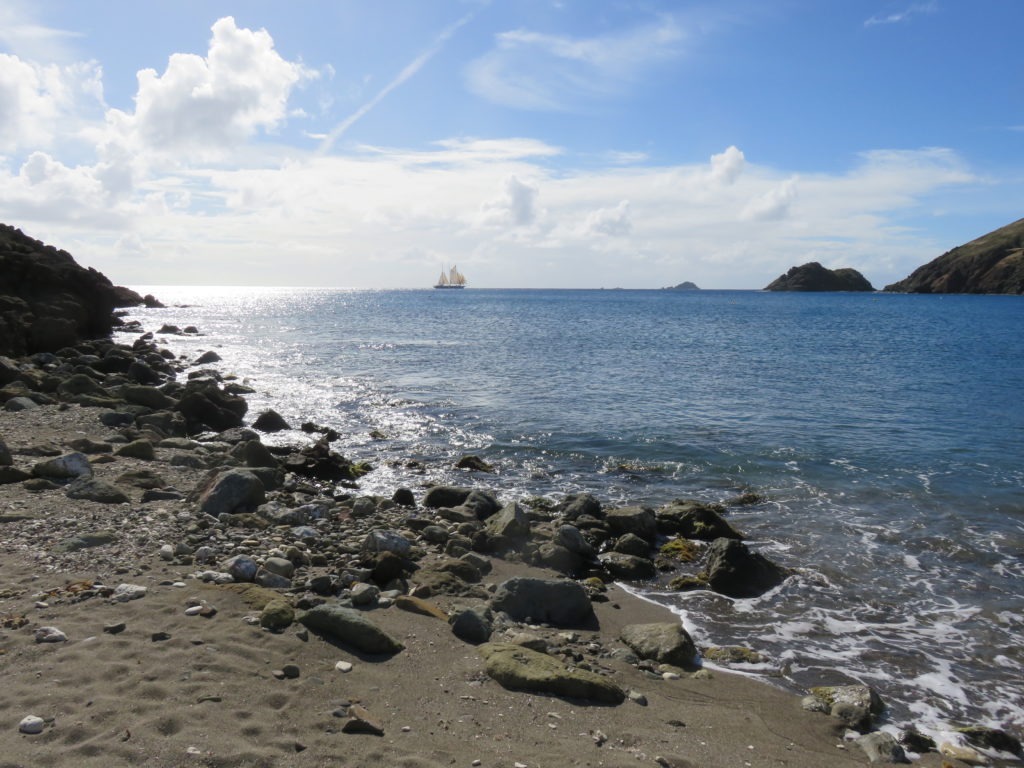Mélody is an Assistant Professor at the Université des Antilles in Guadeloupe. You can see more about Mélo’s research here.
The eastern boundary of the Caribbean plate is a subduction zone along which the North and South American plates are subducted. In the course of this subduction, the paleogeography of the downgoing plate was such that the proto Caribbean ocean was separated from the oceanic crust of the North American plate by the Bahamas bank. The bank was located along a transform fault that accommodated the differential opening of these two oceans. During Early Eocene, the entrance of the Bahamas bank in the subduction zone triggered a cessation of magmatic arc activity and its migration in the forearc region of the subduction zone and a reorganization of the plate boundary. Since then, remnants of an Eocene magmatic arc are standing in the present-day forearc of the Lesser Antilles subduction zone. These remnants are of major interest to study the tectono-volcanic activity during magmatic arc initiation.
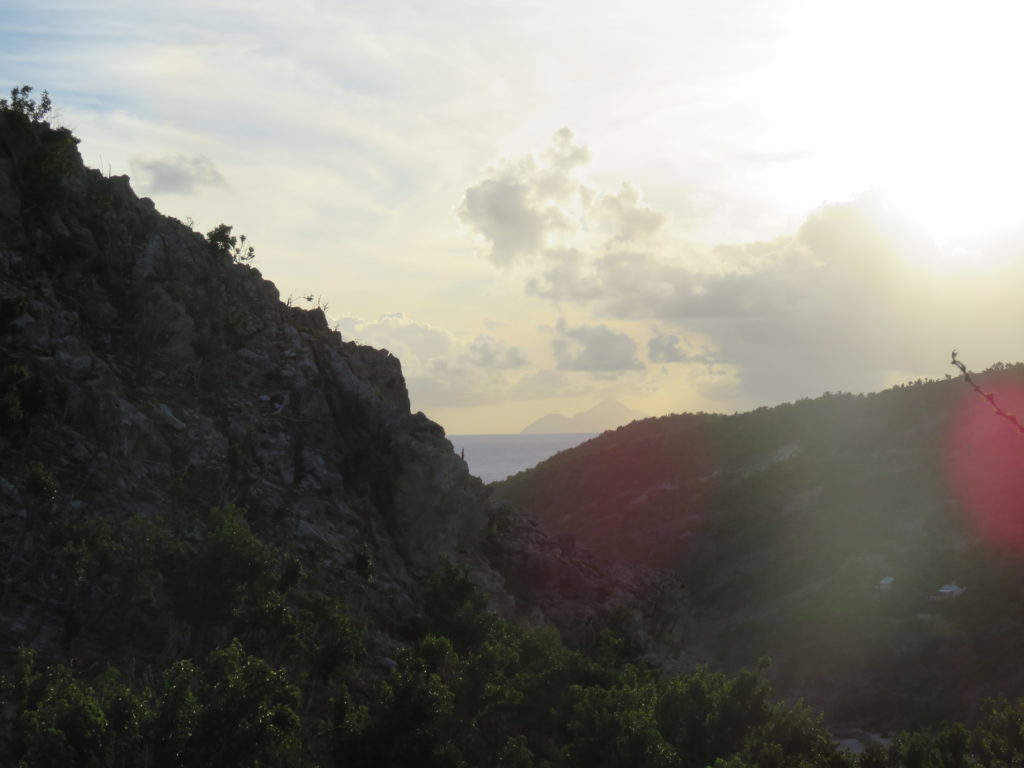
View of Saba, a volcano belonging to the active volcanic arc of the Lesser Antilles, from the southern coast of St. Barthelemy which located in the present-day forearc of the Lesser Antilles i.e. standing between the trench and the volcanic arc.
The emerged Eocene paleo arc is exposed on the island of Saint Martin (magmatic chamber), St. Barthelemy (feeder dykes and domes) and Antigua. I offer you to take a round trip to one of the many jewels of the caribbean: the island of St. Barthelemy. We started working on the island in may 2015 with a team of field geologist composed by tectonicists, sedimentologitsts and geochronologists from UMR5243, our research lab.
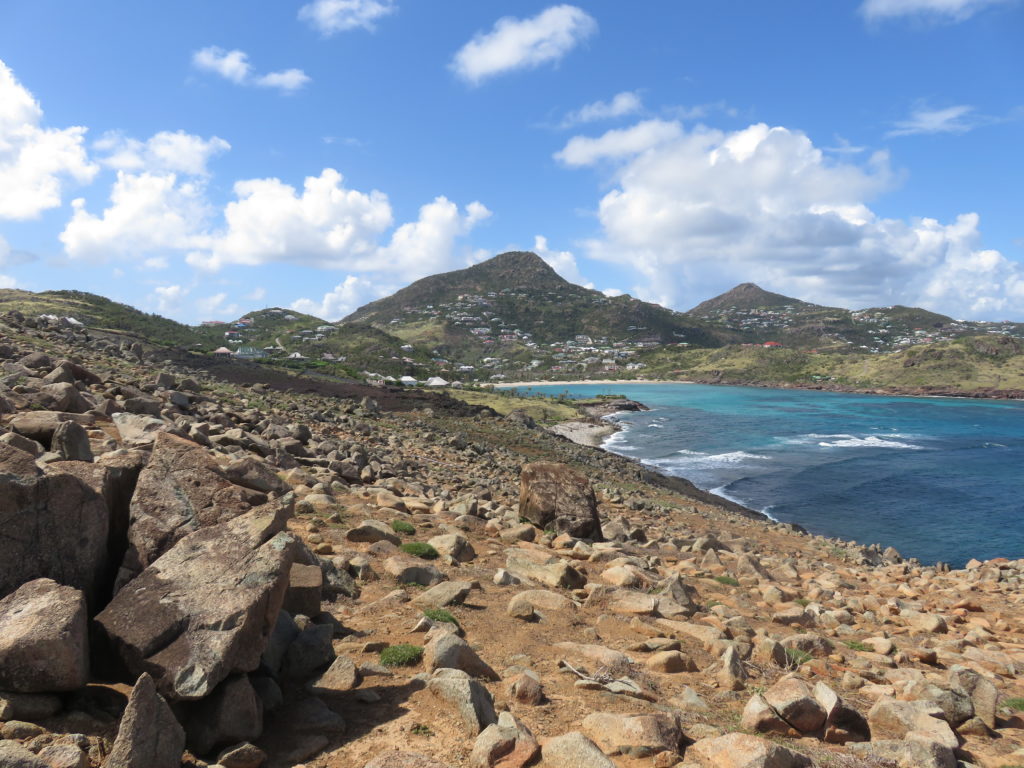
View from Pointe des Petites Anses, Northeastern coast: mid-Eocene andesitic chaos and Oligocene volcanic domes of Morne Vitet (dacitic) and Morne Lacroix (Latites)
The beauty of the island is stunning and its wildness astonishing for being one of the most poshy/VIP place of the world. May the island keep its wildness side for ever.
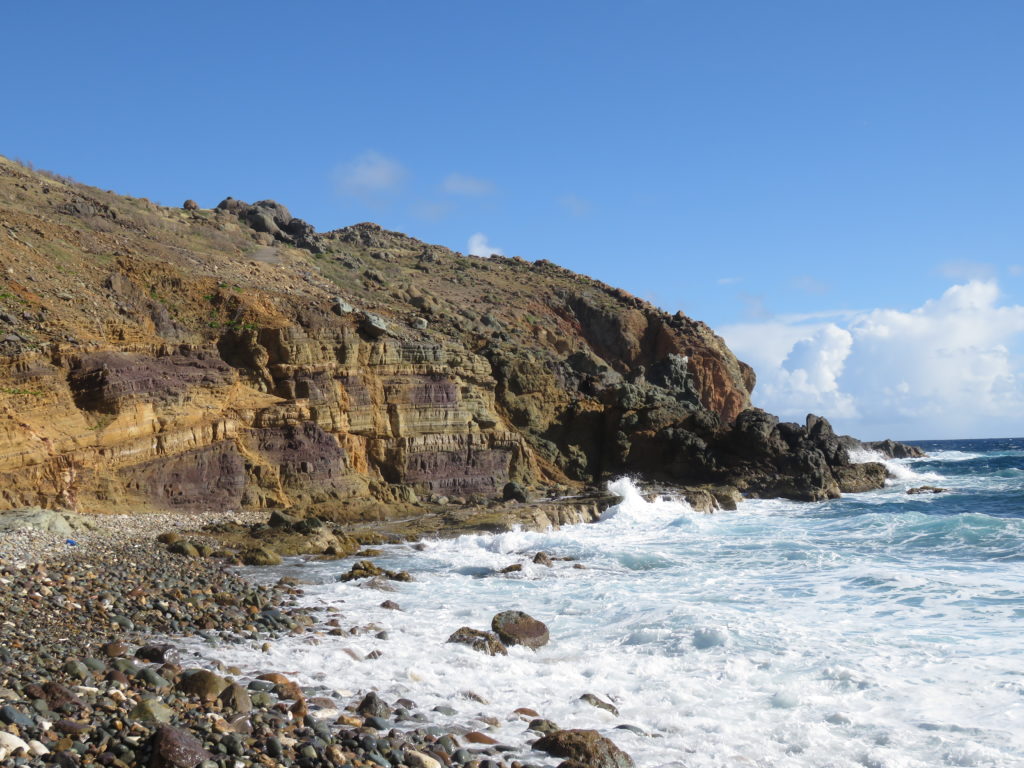
Southeastern coast of St. Barthelemy: Deep slope deposits consisting in hyaloclastites (ash falls) intruded by an andesitic pluton
The geological interest of St. Barthelemy stands in its amazing neat exposures of deep basins rocks intruded by andesitic pluton.
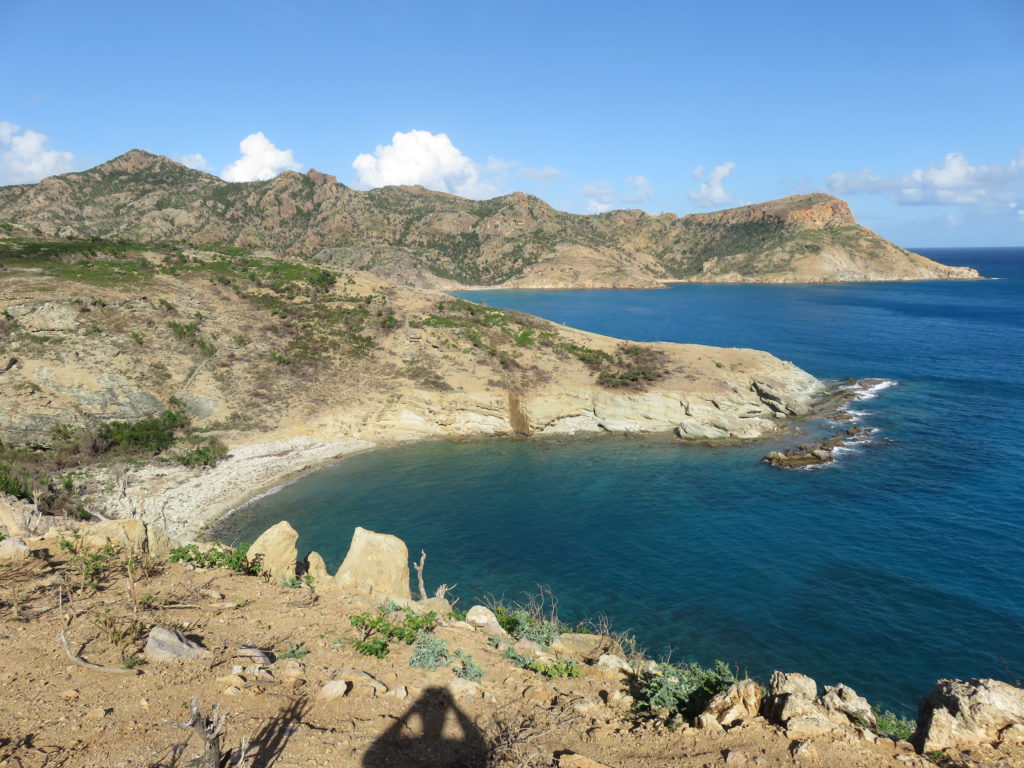
Southern coast of the island. fFont: Anse Chauvette area displays well stratified hyaloclastites intruded by a dyke. Background: latite dome of Morne Rouge
Constraining the age of the pluton and establishing the strain pattern and kinematics affecting the island, allow a better understanding of how a new volcanic arc initiate in terms of geochemistry of the magmas, localization and migration of the volcanic activity at local scale and associated stress field (See Legendre et al., 2018).
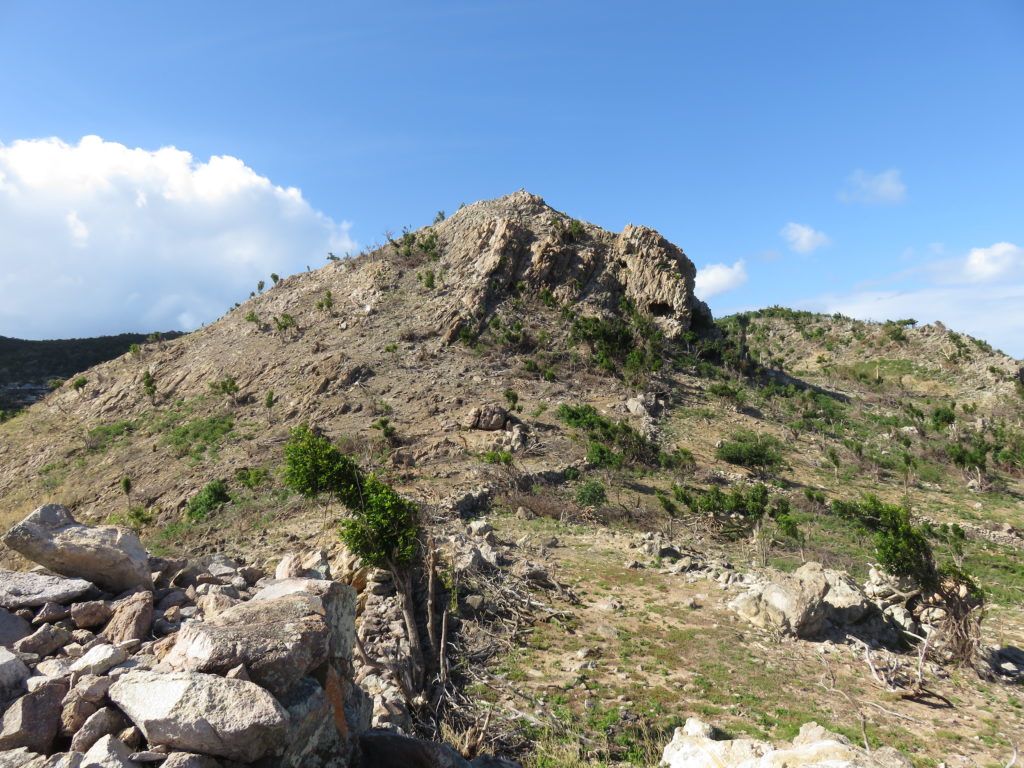
A view of the eastern point of Anse Gouverneur, where a dacitic dome is emplaced in the sediments. The lava flow is banded showing a fluidality parallel to the contact with the country rock.
Whereas the arc that stands in the forearc of the Lesser Antilles subduction was though to be Eocene, we recently showed that St. Barthelemy witness magmastim over the Mid-Eocene-Early Miocene time span.
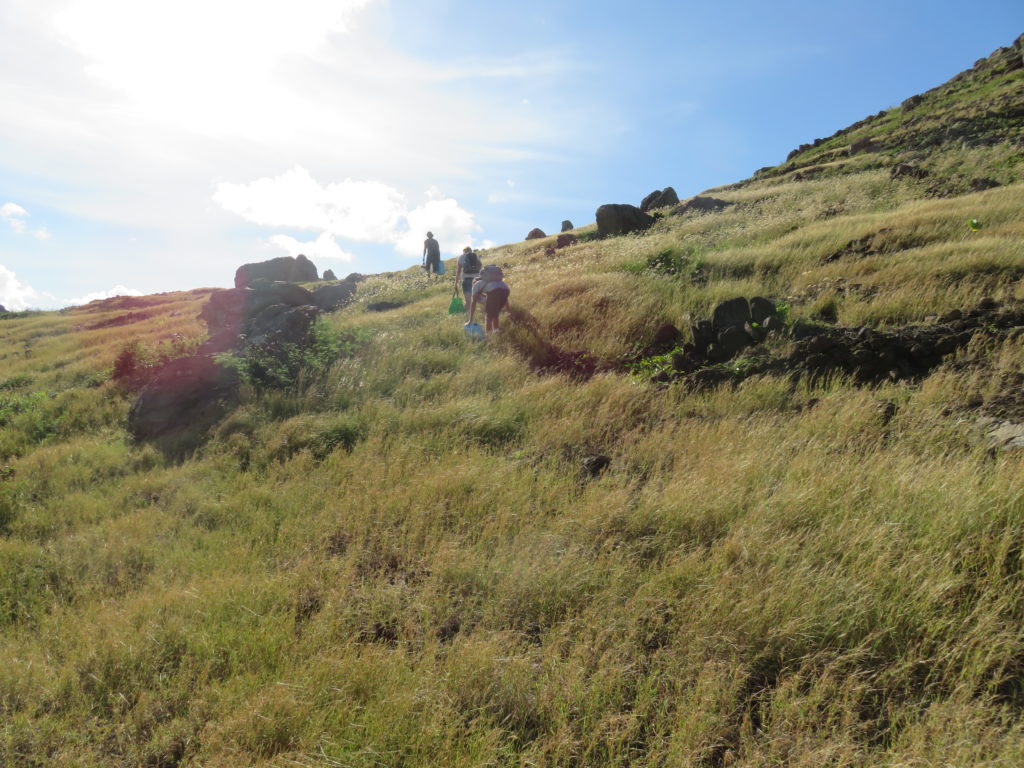
PMag expedition on Fourchue deserted islet. From top to bottom: Douwe, Lydian, Adriano and myself taking the picture.
Last January we proposed to our paleomagnetists colleagues Lydian Boschman and Douwe van Hinsbergen to join us in the island to sample both intrusions and limestones cropping out in the island and islet. Paleomagnetic data will allow us to better understand the block rotations as well as the bulk deformation underwent by the Caribbean plate during the collision with the Bahamas bank and thus the subsequent plate boundary re-organization.
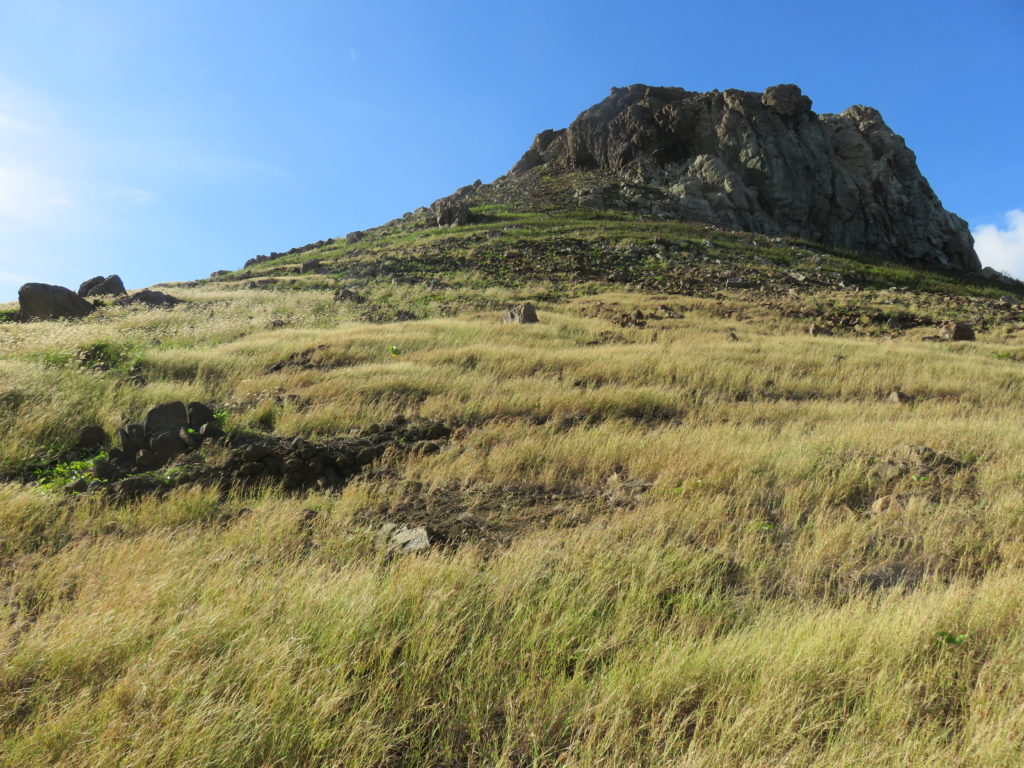
Wild beauty of one of Fourchue islet Peaks (Fourchue means peaky, and the islet show six peaks, the main reaching 90m high). For the little anecdote, wild goats are devastating the Antilles natural landscapes. Fourchue is protected and the goats have been removed in 2015; since then the nature is slowly but steadily recovering.
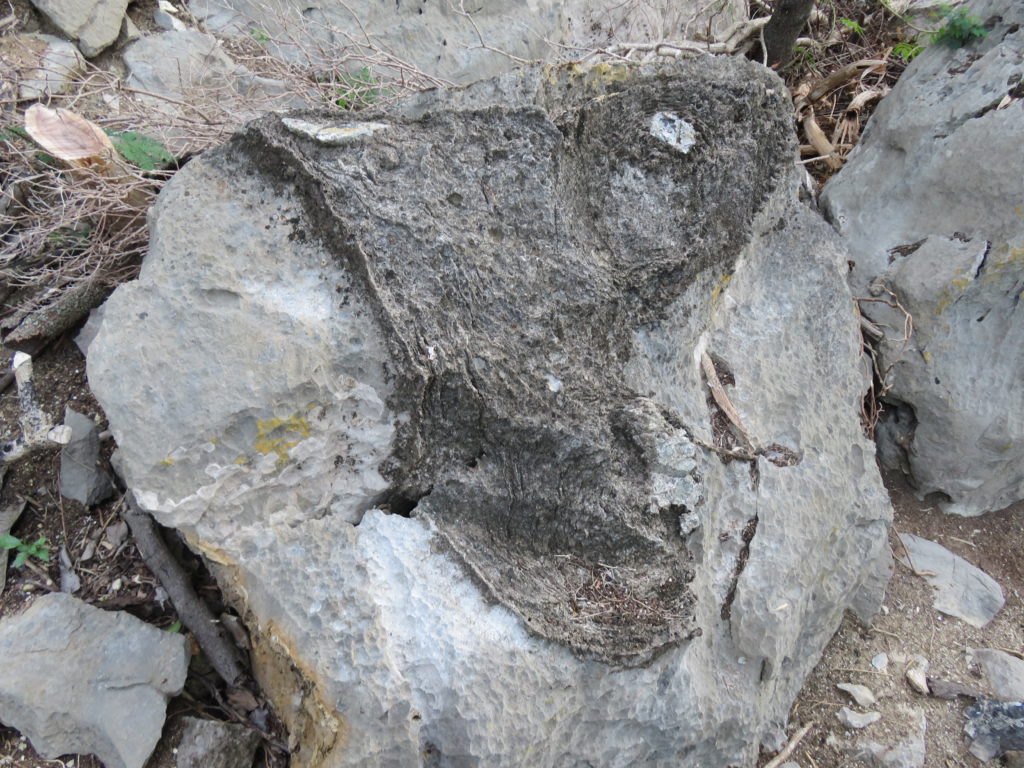
Lurin plateau, southern central part of the island: Eocene huge coral colonies indicate the Eocene paleosea level now at 50m above sea level.
On top of the deep basin series, shallow water carbonate platforms are exposed. These platforms are a very good indicator for paleo-seal level as they display fossil coral colonies in living position. These indicators are used to study the Lesser Antillean forearc vertical motions.
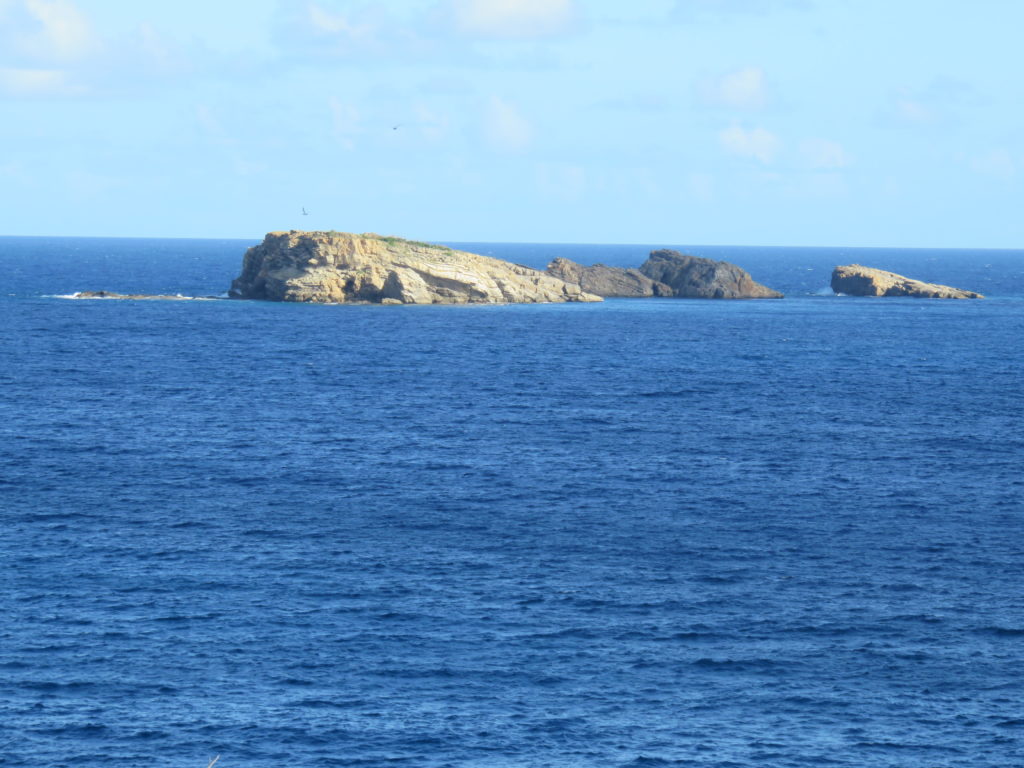
Coco islet is made of Eocene Limestone. This islet is the place where Gilles Maincent has discovered the fossil of a giant rat,Amblyrhiza, in 2010 in exposed caves (See MacFarlane et al., 2015). The presence of this gigantic rat in the northern Lesser Antilles was know in Anguilla since 1868 (Edwin Drinker Cope).
Also, these limestones are kartisified and the paleosoil found in the karst, known as terra rossa, yielded mamals and bird fossils that are of great interest. Indeed, the study of these fossils may give insight on the migration path from South to North America across the Caribbean. Coupled with the study of vertical motion, through fieldwork and marine geophysical acquisitions, the emerged land can be mapped through time. Numerical modeling of large subduction processes will help to understand the identified forearc vertical motions. This is the goal of GAARANTI project (ANR-17-CE31-0009), funded by the ANR for 2018-2022. I’m co PI of the on-shore geology task and it will take me to other island all along the Caribbean arc.
I want to thank St Barth Essentiel association, St Barth Yacht Club and the Collectivité of St. Barthelemy for helping us with the logistic during fieldwork. The first field investigations have been funded by GEOTREF consortium and INSU Tellus SYSTER 2017 OBLISUB.
![]() This work is licensed under a Creative Commons Attribution-NonCommercial-ShareAlike 4.0 International License.
This work is licensed under a Creative Commons Attribution-NonCommercial-ShareAlike 4.0 International License.

